In recent years, National Bus Trader has published several articles covering developments in alternative fuels for buses. On many occasions we have suggested that indications are that the bus industry is moving towards electric buses. The biggest thing holding us back is the state-of-the-art in battery capacity. However, various advances, including in-route charging systems, have helped make battery electric buses more practical.
Recent research into the article on electric buses [April, 2018 National Bus Trader] disclosed that ZF has been working in several areas to provide electric drive or hybrid systems for all types of buses from the minibuses and shuttle buses through city transit buses to over-the-road coaches. Some of these components are already in production and use with OEMs while others will be available soon. While this information only covers ZF, it does provide insight into where the industry has advanced today in regard to electric buses. It also shows us where the bus and coach industry will be moving in the future.
From Airships to Advanced Technology
ZF celebrated its 100th anniversary in 2015. The company was originally founded in Germany by Count Ferdinand von Zeppelin to make gears and transmissions for his airships. This was not as easy to do as you might think since the automotive and aviation industries were in their infancy and it took special equipment and expertise to make precision gears. An interesting note is that the company was originally called “Zahnradfabrik,” which translates as “Gear Factory.” This was the origin of the shorter ZF name we use today that is normally pronounced the European way as “Zed Eff.”
If you will excuse my puns, while the airship business floated away, ZF’s quality engineering with transmissions moved into high gear. Before long they were building numerous kinds of high-quality automotive components including steering, axles and transmissions. Their transmissions became a leader in the worldwide bus market while ZF axles are found on most integral coaches sold in the United States and Canada.
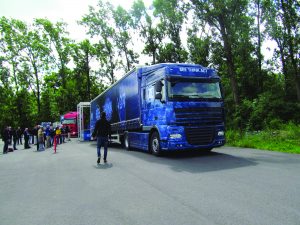 In recent years, ZF has been moving more into the eMobility, digitalization, and autonomous driving markets through research, engineering, acquisitions and mergers to stay ahead of the industry. Among several noteworthy achievements are ZF’s AS Tronic transmission that combines the economy of a manual transmission with electronic control. Introduced almost 10 years ago, the ZF EcoLife powershift transmission is well recognized in transit bus fleets across North America. Along with the proprietary fuel saving software ZF TopoDyn that offers infinitely variable shift programs, the EcoLife already provides reduced fuel consumption and CO2 emissions ahead of electric powered buses.
In recent years, ZF has been moving more into the eMobility, digitalization, and autonomous driving markets through research, engineering, acquisitions and mergers to stay ahead of the industry. Among several noteworthy achievements are ZF’s AS Tronic transmission that combines the economy of a manual transmission with electronic control. Introduced almost 10 years ago, the ZF EcoLife powershift transmission is well recognized in transit bus fleets across North America. Along with the proprietary fuel saving software ZF TopoDyn that offers infinitely variable shift programs, the EcoLife already provides reduced fuel consumption and CO2 emissions ahead of electric powered buses.
In September of 2014, ZF announced it was acquiring TRW, known for their integral vehicle control and driver assist systems, braking systems, steering systems, suspension systems, occupant safety systems, engine components, testing systems and aftermarket replacement parts and services. One of the latest developments in this area is the ZF cooperation with ZAPI in Italy in the areas of power electronics (inverter and controller) systems.
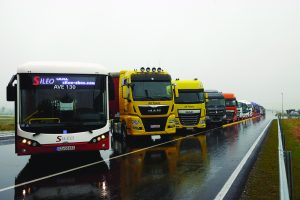 The result of all of this is that ZF already offers a wide range of components to OEM bus builders that make it easy for them to add an electric bus to their product line. In addition, ZF has components and products for electric buses that are coming online in the near future. For all practical purposes, essentially any bus that is designed for diesel or alternative fuels can be built as an electric bus using ZF components. Moreover, some of these components could also be used with fuel cell or trolley buses. Following is a review of ZF products and components for powering electric buses. We will include both current products as well as those that will be available in the near future. To make things simple, we will start with cutaway and shuttle buses and then move through transit buses to motorcoaches.
The result of all of this is that ZF already offers a wide range of components to OEM bus builders that make it easy for them to add an electric bus to their product line. In addition, ZF has components and products for electric buses that are coming online in the near future. For all practical purposes, essentially any bus that is designed for diesel or alternative fuels can be built as an electric bus using ZF components. Moreover, some of these components could also be used with fuel cell or trolley buses. Following is a review of ZF products and components for powering electric buses. We will include both current products as well as those that will be available in the near future. To make things simple, we will start with cutaway and shuttle buses and then move through transit buses to motorcoaches.
Cutaway and Shuttle Buses
There has been increasing interest in powering cutaway, shuttle and other body-on-chassis buses with battery electric power. As with other buses, basic concerns include going green, reduced maintenance and lowering operating cost. What makes cutaway and shuttle buses particularly appropriate candidates for battery electric operation is that many of them are used in applications that are short or offer substantial time for recharging.
Requests from OEMs prompted ZF to work on developing an electric drive for this market. They started with an existing and proven design for electric cars that went into volume production in 2018. ZF engineers developed this into a central drive for light commercial vehicles known as the eCVD. It combines an electric motor with a two-stage single-speed transmission, differential and power electronics to create a highly integrated and compact unit. Since this system will go up to 150 KW, it also can be used on slightly larger midi-buses.
This will go into regular production in the near future. The first OEMs to use it will have buses on the market by 2020.
Transit Buses
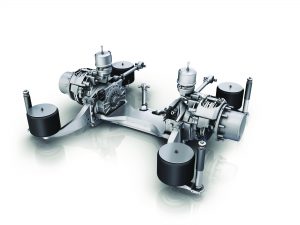 ZF offers two different power options for transit buses. This includes the AVE 130 low-floor electric portal axle with built-in motors and the CeTrax Central Drive motor. Both options were developed for demanding city transit applications. ZF provides a complete system that includes an inverter as well as controls and electronics. In addition to providing low curb weight, they can power buses up to 29 tons in weight. Ongoing support of both the OEMs as well as the transit agencies is provided by ZF specialists.
ZF offers two different power options for transit buses. This includes the AVE 130 low-floor electric portal axle with built-in motors and the CeTrax Central Drive motor. Both options were developed for demanding city transit applications. ZF provides a complete system that includes an inverter as well as controls and electronics. In addition to providing low curb weight, they can power buses up to 29 tons in weight. Ongoing support of both the OEMs as well as the transit agencies is provided by ZF specialists.
The AVE 130 electric portal axle has been on the market for a while and is currently in use in numerous applications. It integrates two electric wheel motors into a low floor axle while combining low weight with a peak power of 250 KW. The axle bridge does not need a differential and the electric motors are cooled by a combination of water and air.
This design offers several advantages to the OEM. The low-floor style makes it easy to incorporate the AVE 130 portal axle into a low-floor bus using other low-floor axles. In addition, putting the motors in the axles frees up space in the traditional engine compartment that can be used for other auxiliaries including the inverters and control system.
ZF’s second and newest offering is their CeTrax Central Drive. It offers a peak power of 300 KW and incorporates some of the integrated planetary stage technology that has been proven in the ZF EcoLife transmission.
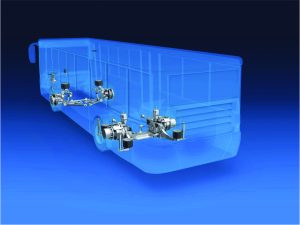 What makes the CeTrax so viable in electric buses is that it is suitable for all types of electric buses and allows for the use of standard axles with common gear ratios. The CeTrax goes into the engine compartment in place of a diesel or alternative fuel engine and then connects with a typical driveline. The CeTrax can be “dropped into” virtually any OEM bus to turn it into an electric bus.
What makes the CeTrax so viable in electric buses is that it is suitable for all types of electric buses and allows for the use of standard axles with common gear ratios. The CeTrax goes into the engine compartment in place of a diesel or alternative fuel engine and then connects with a typical driveline. The CeTrax can be “dropped into” virtually any OEM bus to turn it into an electric bus.
In addition to the AVE 130 electrically powered axle or the CeTrax Central Drive, ZF would provide more of a system that includes an inverter as well as an electronic control unit. The inverter converts sto

red battery energy into the electric power required for the electric motors that is 650 volts. For those of us who have had experience with streetcars and trolley buses, this is a standard voltage for electric vehicle applications. ZF also supplies their EST 54 Electronic Control Unit to optimize performance and insure that everything works together and works properly. The bus manufacturer supplies the bus itself as well as the batteries or other source of electric power.
A typical single unit transit bus is 40 feet long with two axles, although there are some shorter buses. The ZF components provide two alternatives for electric bus operation. One alternative would be to install the AVE 130 low-floor electric portal axle in the rear and power it through the inverter and electronic control unit. This would eliminate the need for an engine in the engine compartment.
The second alternative would be to install the CeTrax Central Drive Electric Motor in the engine compartment and hook it to a driveline connected to the rear axle. This offers the advantage of being compatible with virtually any type of bus including both a standard height and low-floor models. It can be used with standard bus axles with common gear ratios. Hence, with minimal alterations, it can turn virtually any bus into an electric bus.
There are additional options when you get into the longer articulated transit buses. Typically these are 59-60 feet long, have a front unit with two axles and two doors plus a rear unit with one axle and one door. However, there are other variations.
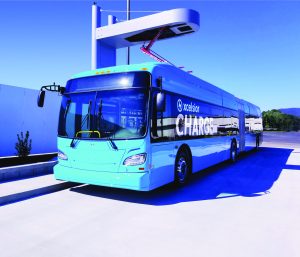 If an OEM prefers to use the AVE 130 electric portal axle, it can go in either the second or third axle position. Putting the drive axle at the second axle position at the rear of the front unit creates what the industry calls a “puller” since the front unit effectively pulls the rear unit. This is much easier to do with the AVE 130 electric portal axle since the floor remains flat and there is no need for an engine to intrude into the passenger seating area.
If an OEM prefers to use the AVE 130 electric portal axle, it can go in either the second or third axle position. Putting the drive axle at the second axle position at the rear of the front unit creates what the industry calls a “puller” since the front unit effectively pulls the rear unit. This is much easier to do with the AVE 130 electric portal axle since the floor remains flat and there is no need for an engine to intrude into the passenger seating area.
The second alternative with the AVE 130 electric portal axle is to put it in the third or rear axle location. This creates what the industry calls a “pusher” since the rear of the bus essentially pushes the front. Again this has several advantages. One is that the floor can remain flat through the length of the bus. A second is that there is no need for an engine to intrude into the passenger area. In fact, there would be no real need for a rear engine compartment.
You can also use the CeTrax Central Drive. However, the only option is to put it at the rear of the bus because it must be connected to a driveline powering the third axle. This does require a rear engine compartment or a place to house the engine. This arrangement can be used on virtually any bus already designed with a rear engine compartment or with a diesel or alternative fuel engine.
CeTrax Two-Speed with High Power eMotor
I might note that ZF is already working on the next development for CeTrax. The current CeTrax Central Drive has only one output ratio. The obvious future development is a CeTrax with a two-speed output and higher power electric motor. While still an electric central drive, this would provide more power and more options. In addition to being suited for transit bus applications where more power could be helpful, it could also be used for an electric central drive on intercity buses and coaches.
This particular development is still in the design phase and actual production is still in the future. However, this gives you some idea of where things are going in the years ahead.
Intercity Buses and Coaches
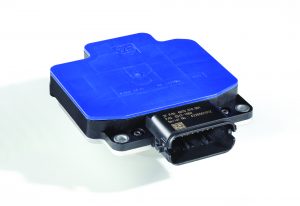 While there is increasing interest in electric coaches, their current range is somewhat restricted because of battery capacity. Unlike city transit buses, charter and tour coaches cannot stop at regular intervals to recharge or top off a charge. Hence, pure electric coach operation currently is somewhat limited to commuter and shuttle applications. However, ZF has been developing the previously mentioned two-speed, high-power machine version of the CeTrax that could be used in intercity coaches when battery technology reaches a point to allow that.
While there is increasing interest in electric coaches, their current range is somewhat restricted because of battery capacity. Unlike city transit buses, charter and tour coaches cannot stop at regular intervals to recharge or top off a charge. Hence, pure electric coach operation currently is somewhat limited to commuter and shuttle applications. However, ZF has been developing the previously mentioned two-speed, high-power machine version of the CeTrax that could be used in intercity coaches when battery technology reaches a point to allow that.
Historically, ZF introduced its AS Tronic transmission in 1997. It offered the economy of a manual transmission with electronic control and it soon become an industry standard. It has been called the most successful heavy-duty automatic transmission in the world and more than one million units have been placed in service. More recently, ZF has developed the modular TraXon transmission for buses and heavy-duty trucks. It has been available for a while and is already being used in some coach applications. The TraXon transmission is proving itself in bus and truck applications and is slowly replacing the AS Tronic.
ZF has already taken this one more step and developed the TraXon Hybrid Module as a state-of-the-art transmission for today’s modern coaches. It features an electric motor installed between the diesel or other type of engine and the transmission. It also provides a highly integrated design with new technology and offers hybrid functionality including recuperation, boosting and electric driving. In long distance applications, the TraXon Hybrid Module reduces fuel consumption by five to seven percent. It does require both an inverter and control unit but uses the existing transmission oil cooling for both the electric machine and the inverter. For those who want it, the TraXon Hybrid Module is available with an optional retarder.
The TraXon Hybrid Module offers a wide range of interesting features. In addition to using the electric motor for regenerative braking, it can also be used as a generator to power electrical components or charge the batteries. Expectedly, the electric motor can be used to move the coach at low speeds.
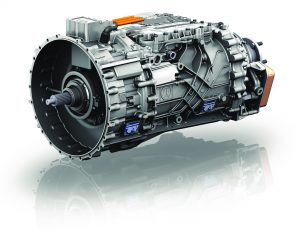 The new and advanced TraXon Hybrid Module is expected to reach the prototype stage in 2018 and go into limited production in 2019. In addition to economy of operation, the TraXon Hybrid Module will pave the way for some autonomous applications for coaches. These could include docking at terminals, driving through a wash rack and going from the service area to its parking spot on its own.
The new and advanced TraXon Hybrid Module is expected to reach the prototype stage in 2018 and go into limited production in 2019. In addition to economy of operation, the TraXon Hybrid Module will pave the way for some autonomous applications for coaches. These could include docking at terminals, driving through a wash rack and going from the service area to its parking spot on its own.
Future
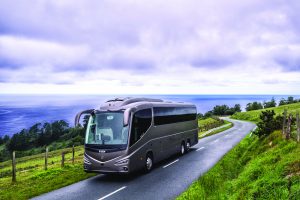 We here at National Bus Trader will be keeping track of all of these innovations and developments. Watch for additional reports and information as these systems go into operation and move the bus industry into the future.
We here at National Bus Trader will be keeping track of all of these innovations and developments. Watch for additional reports and information as these systems go into operation and move the bus industry into the future.

